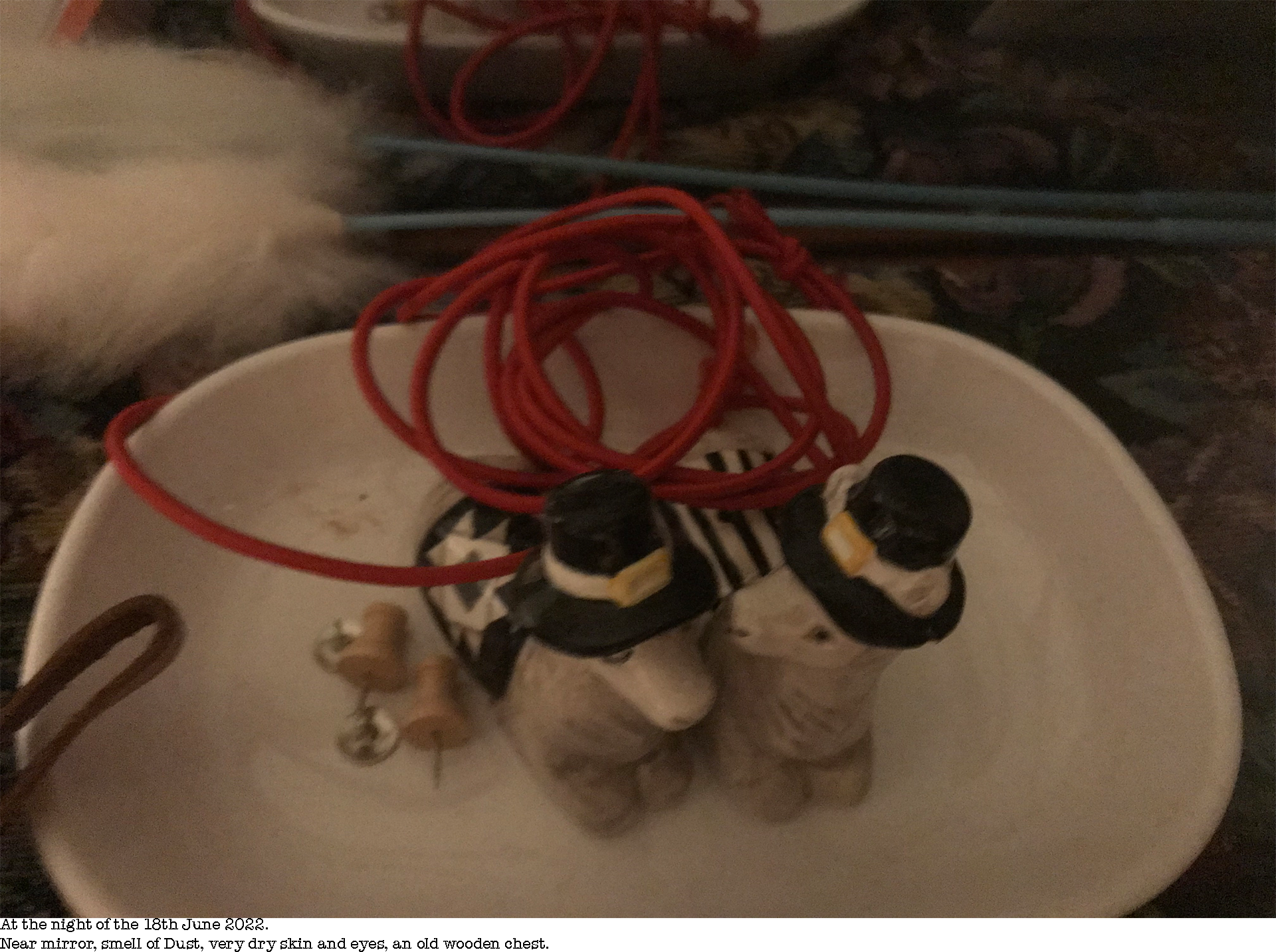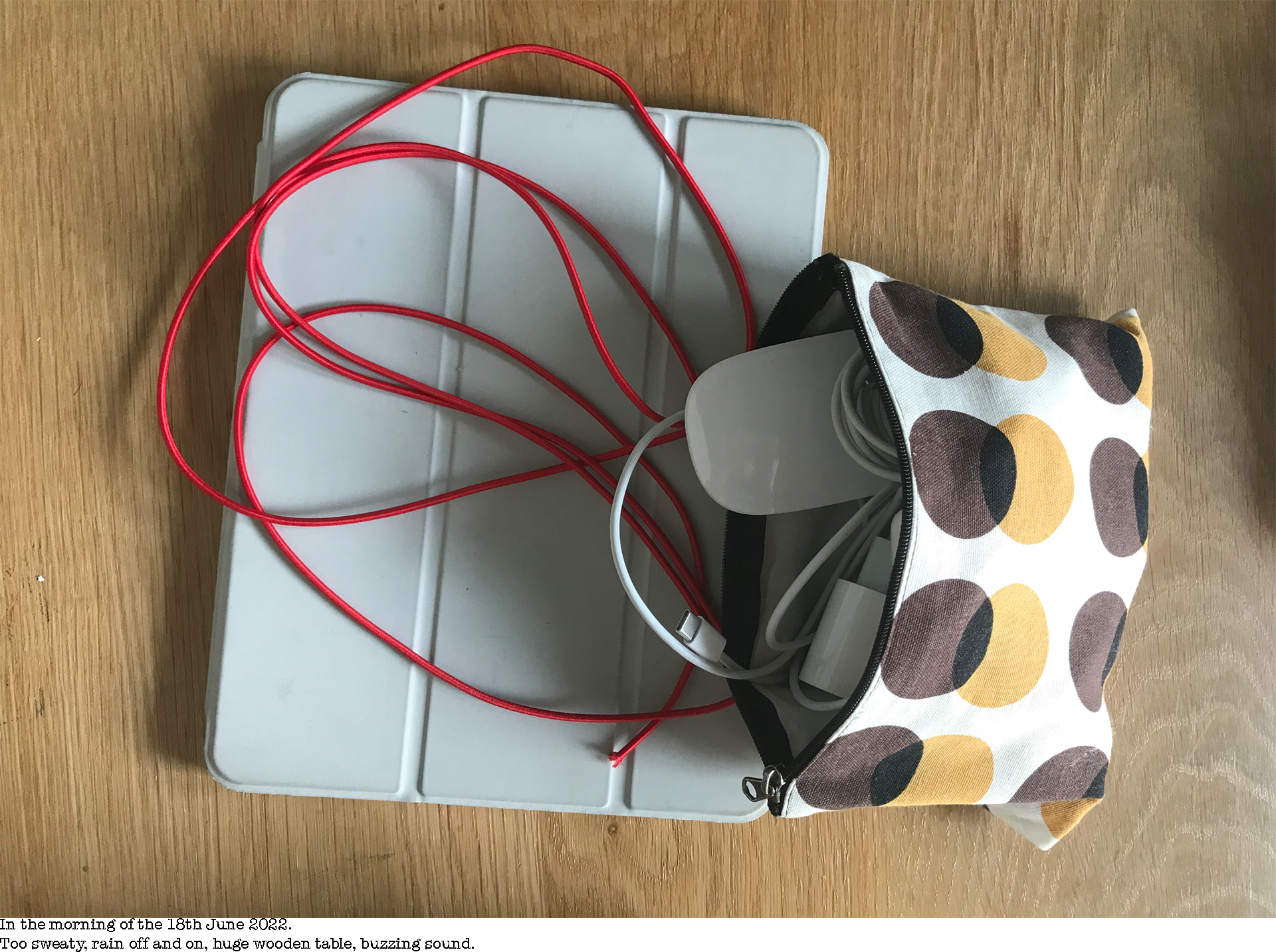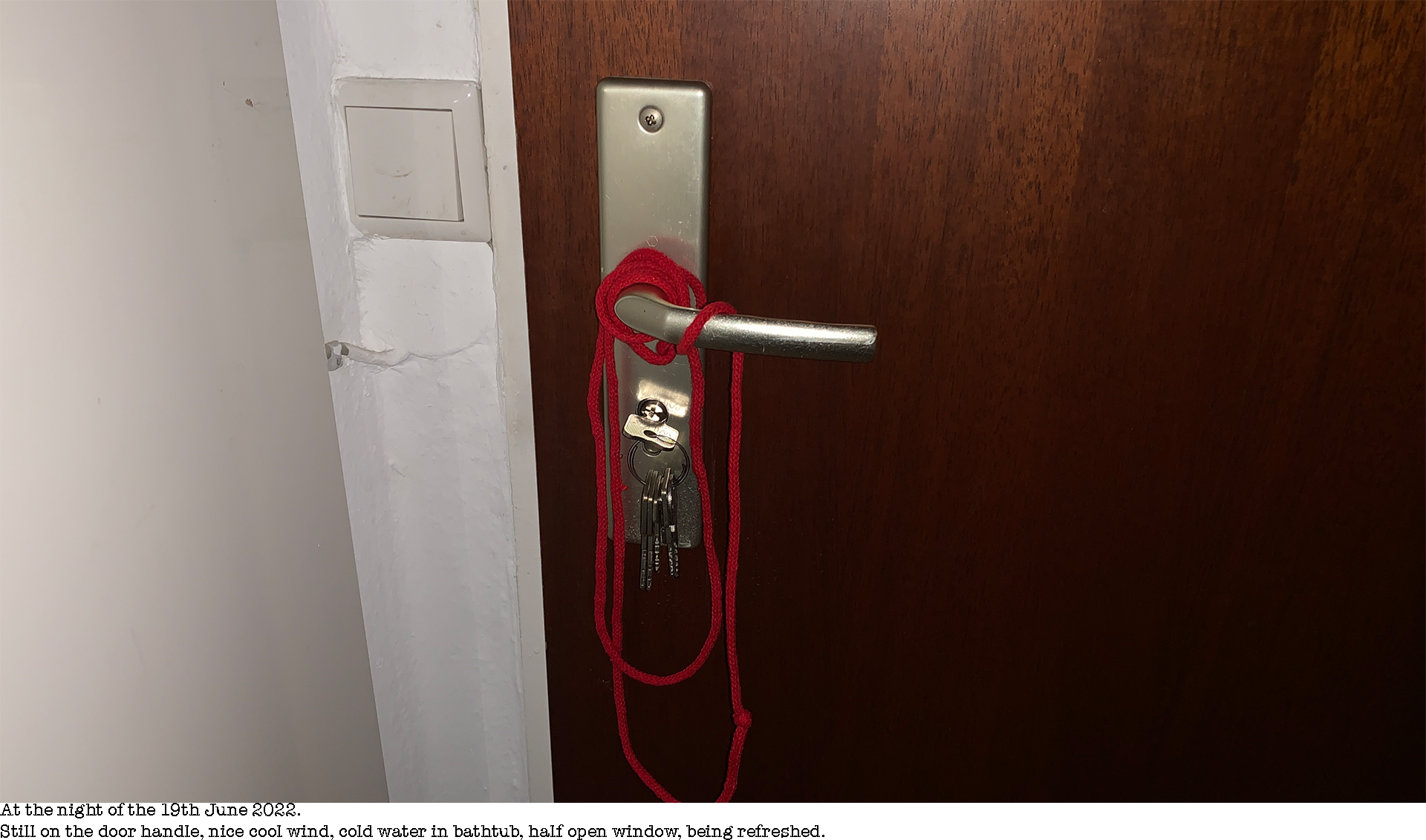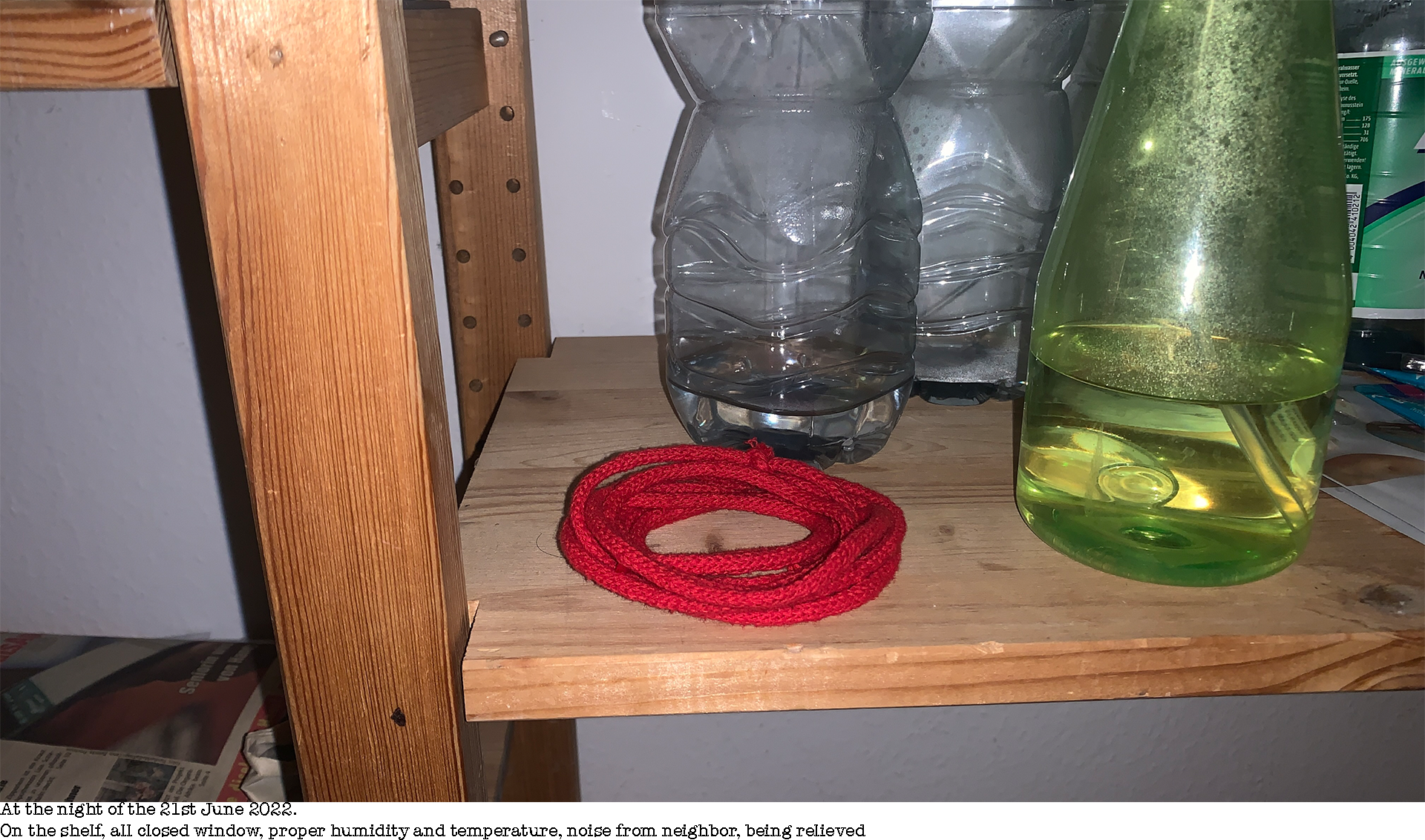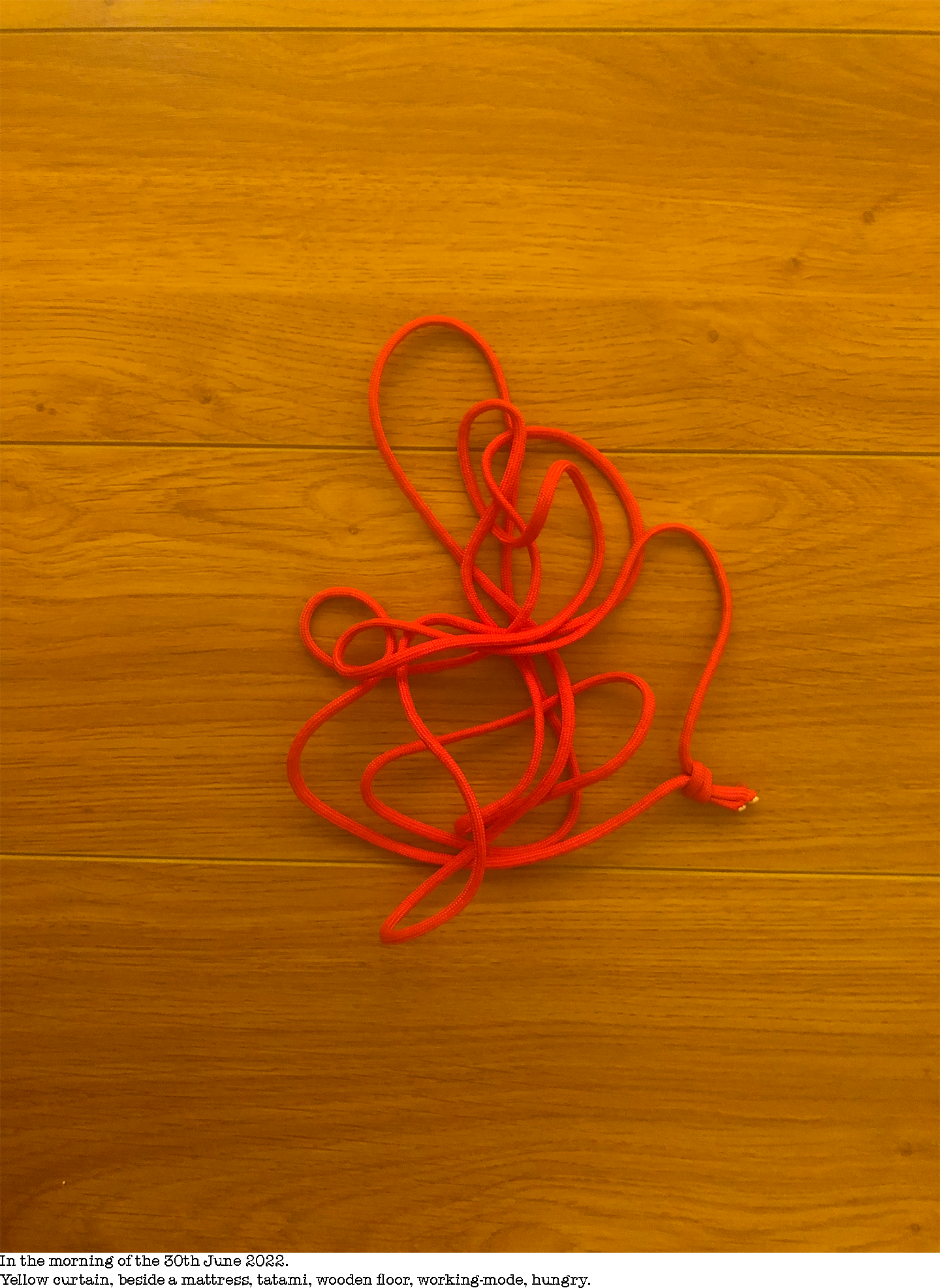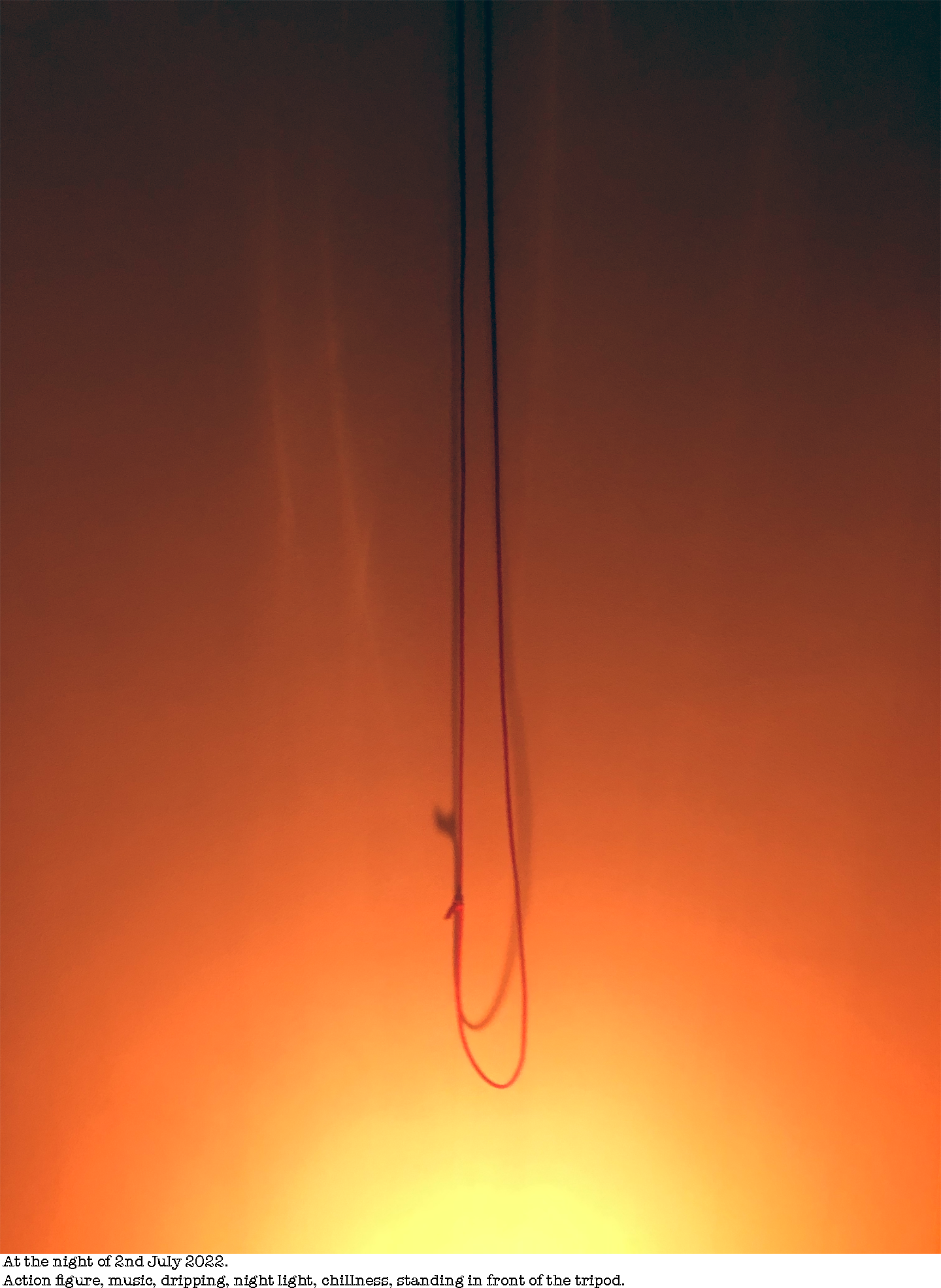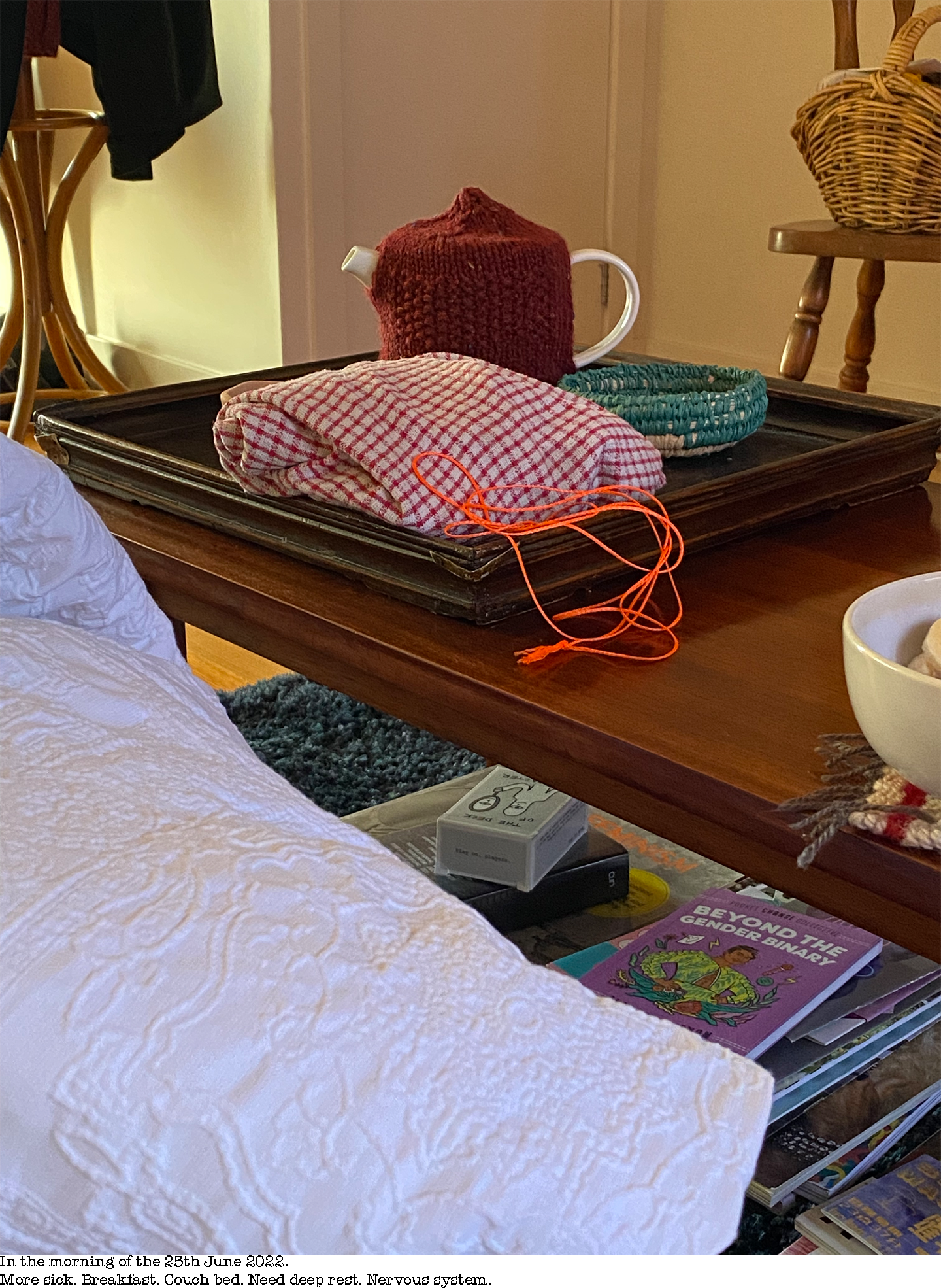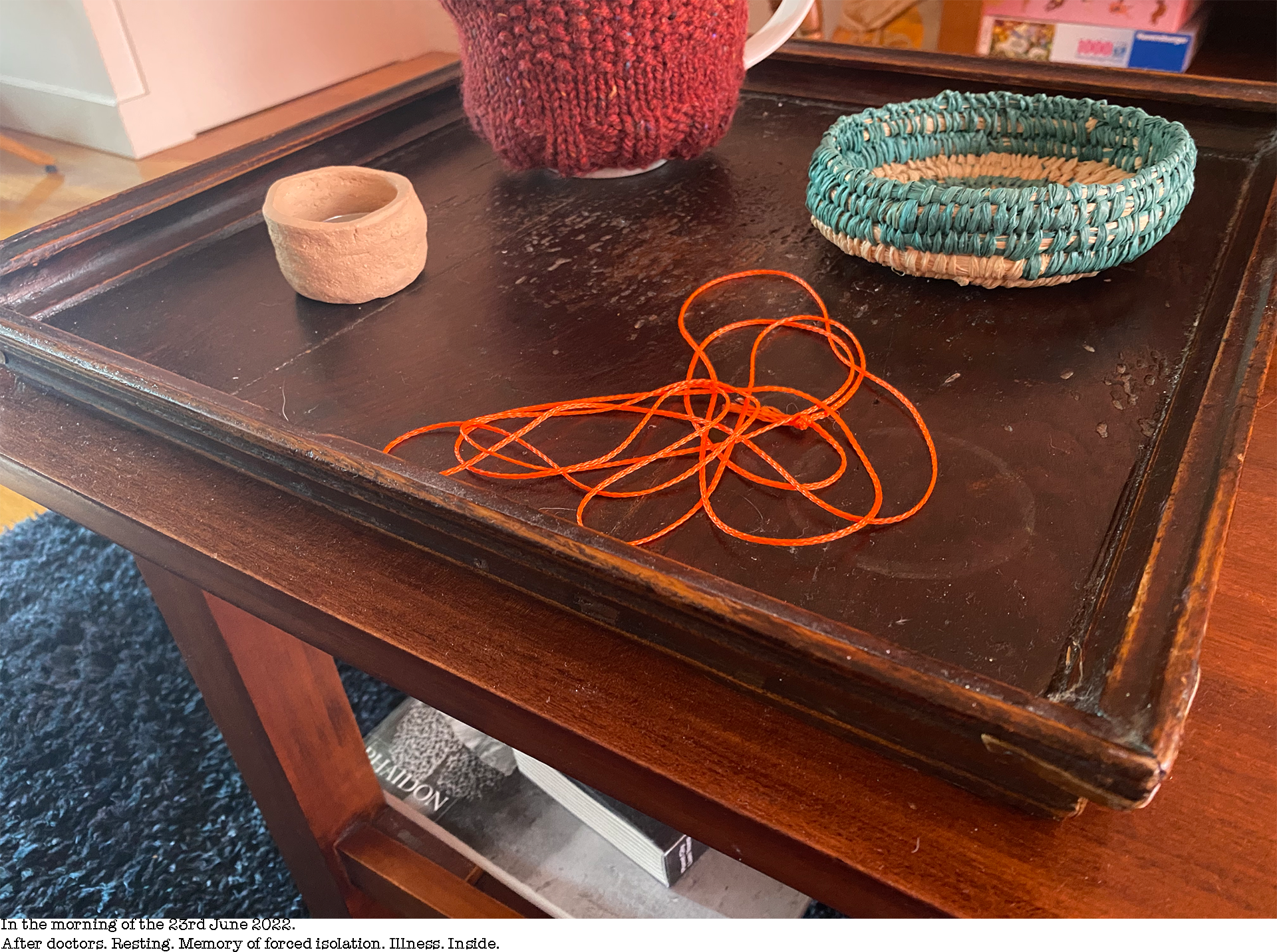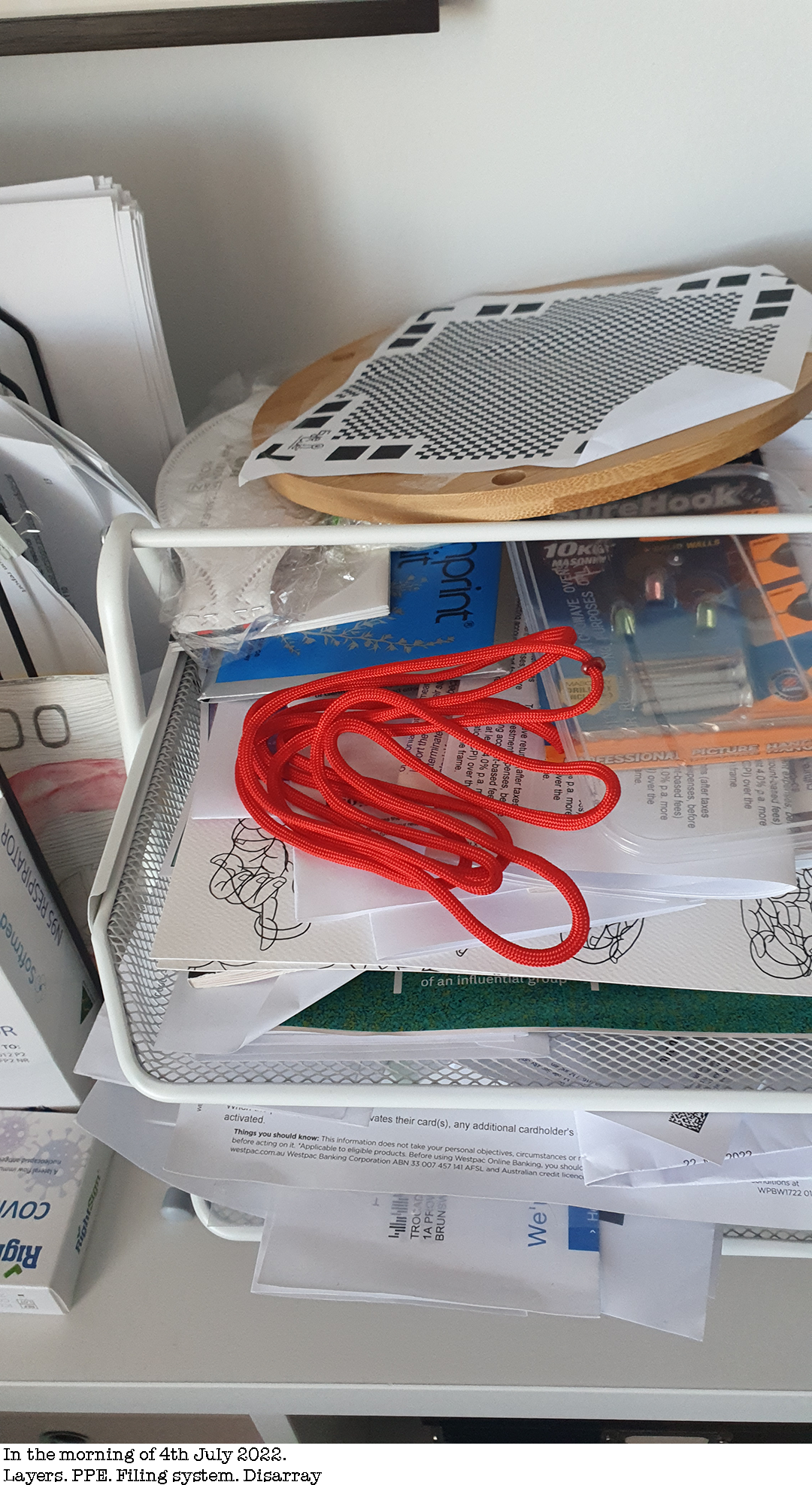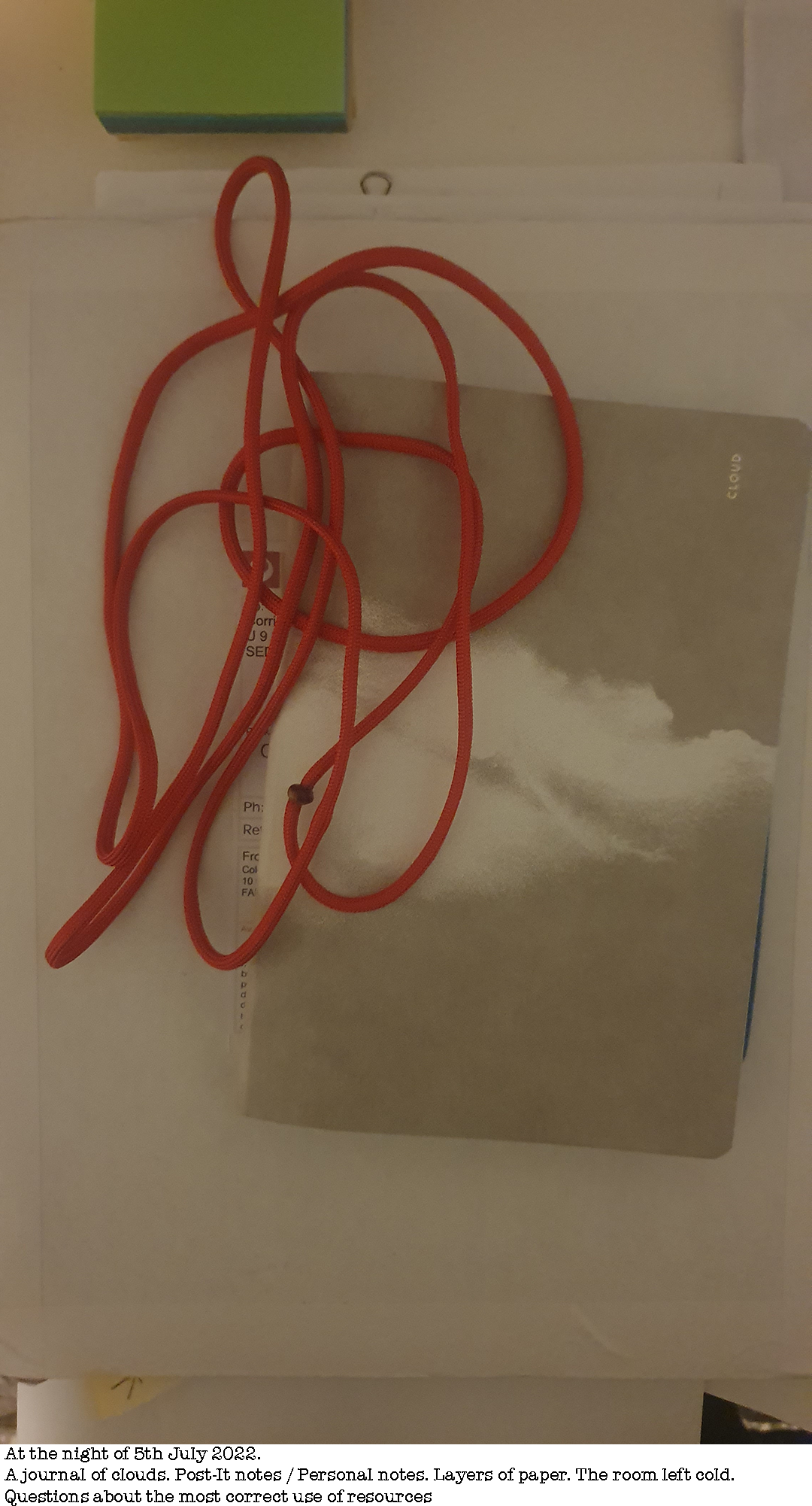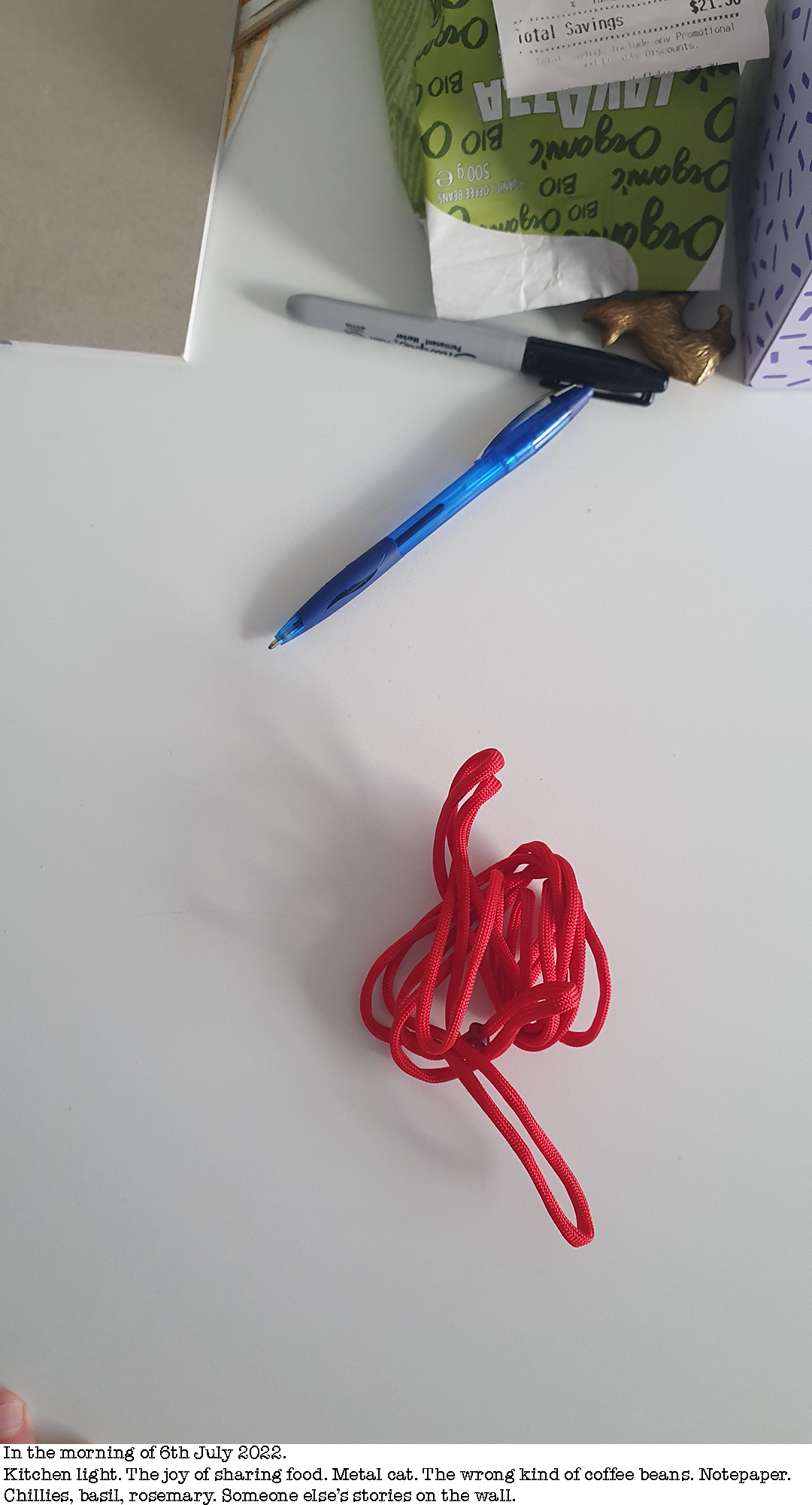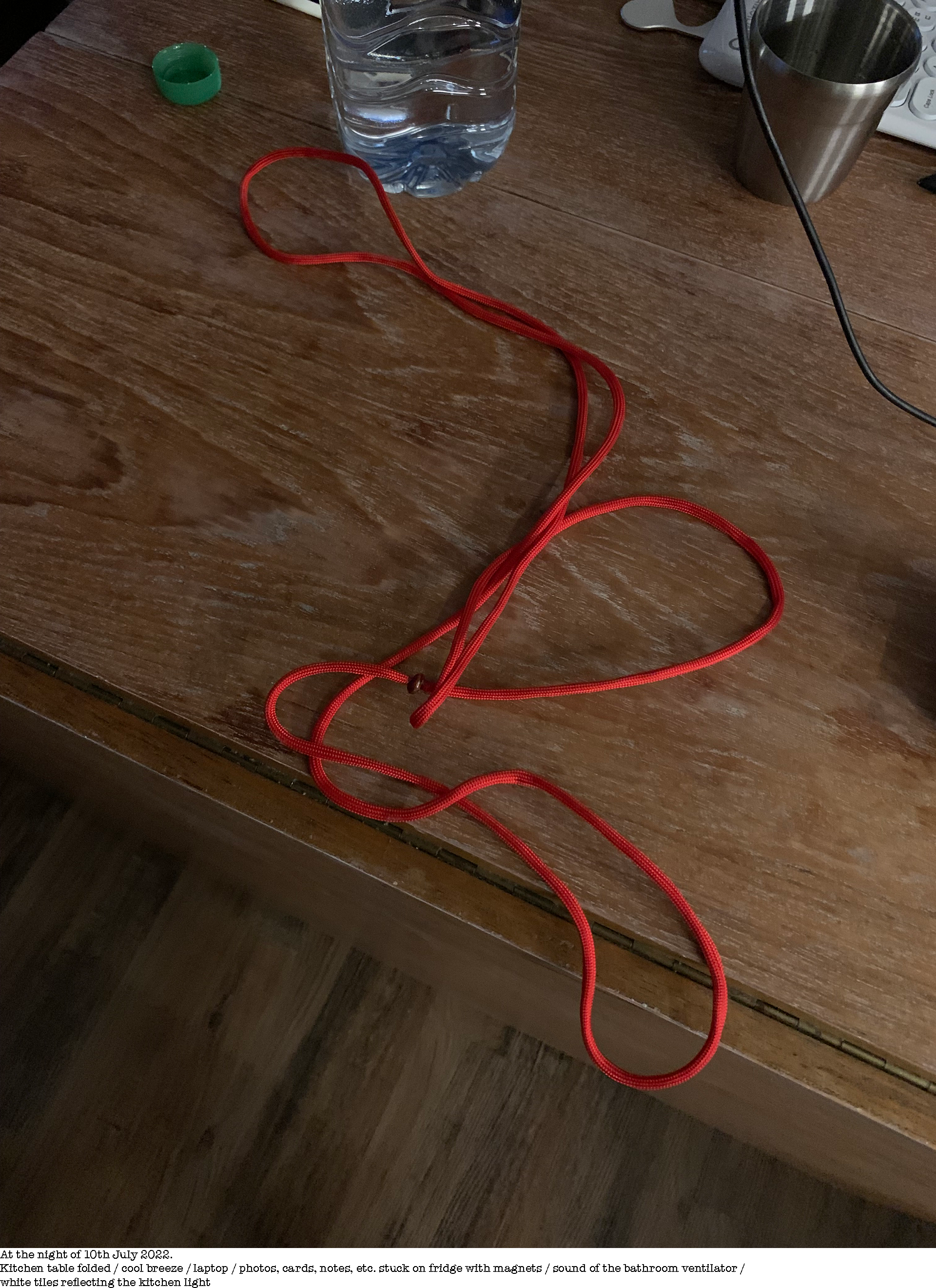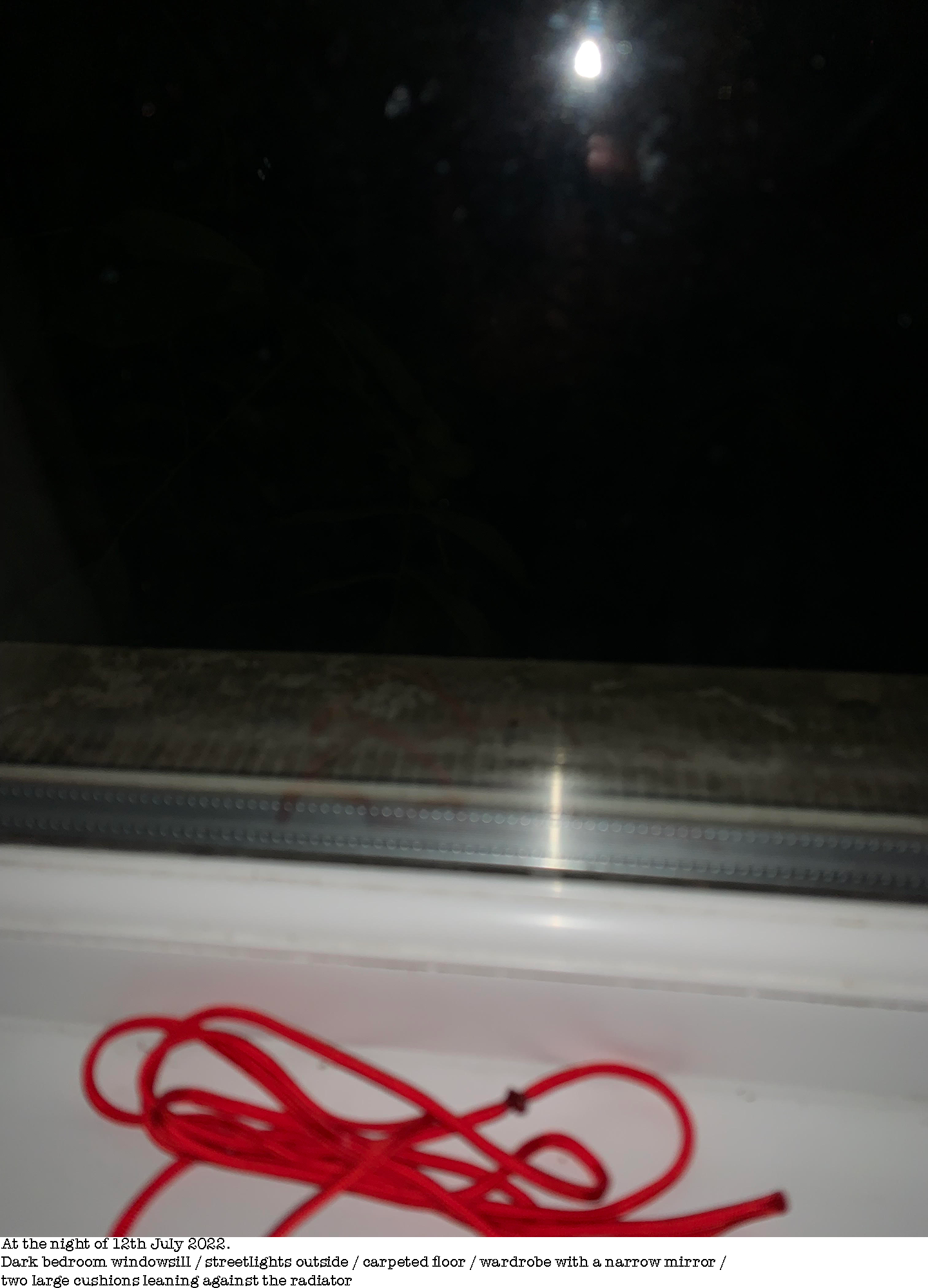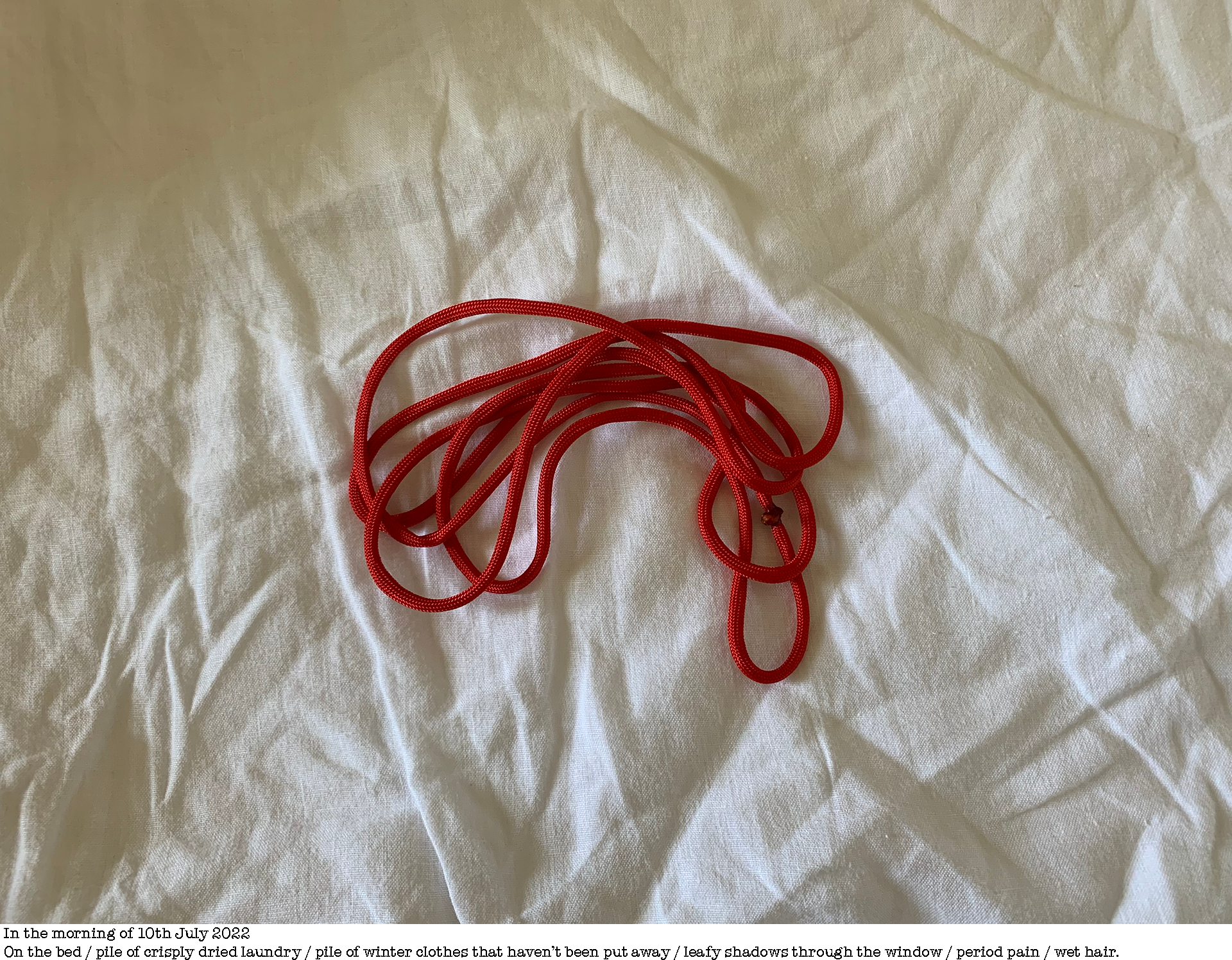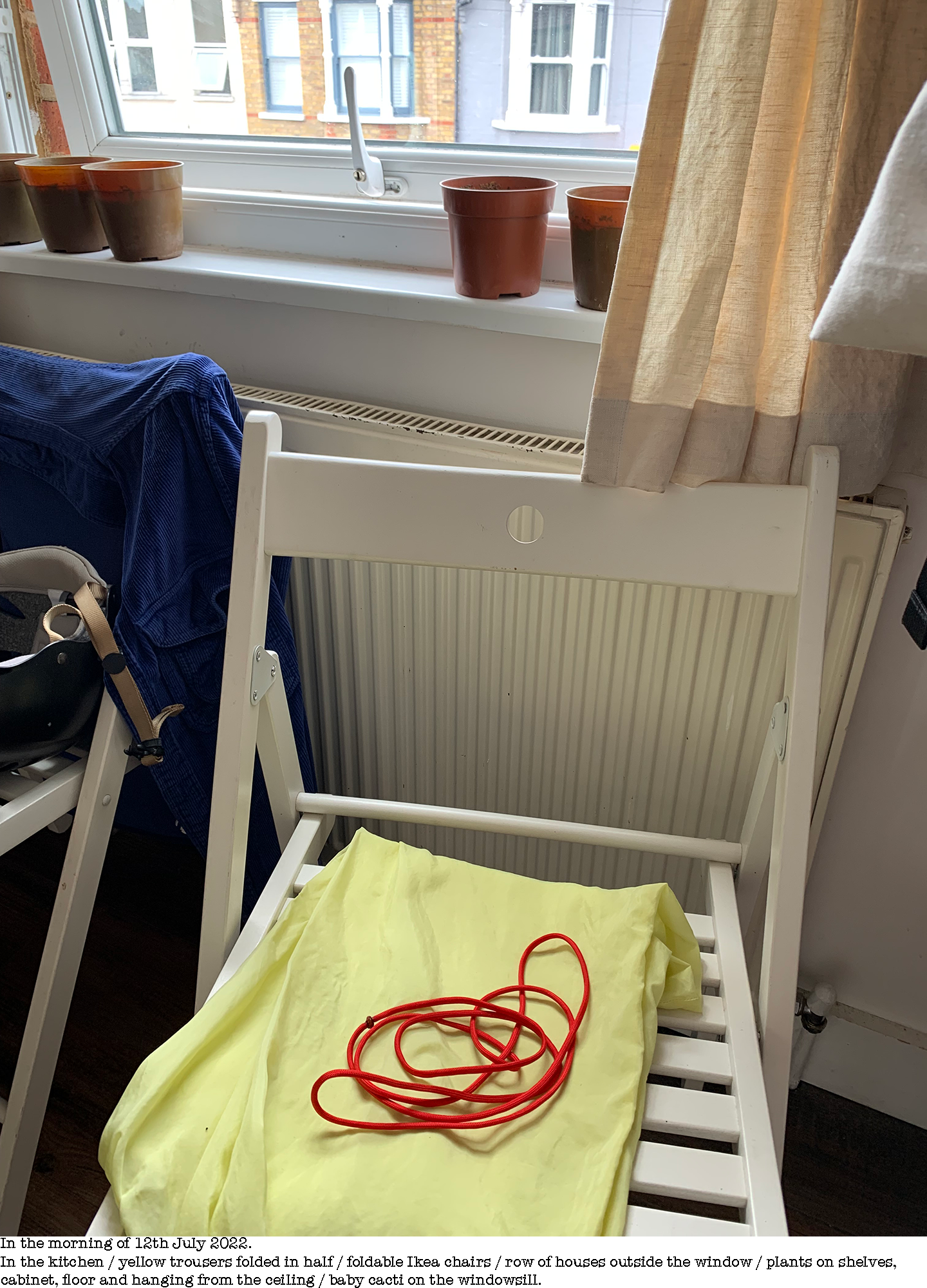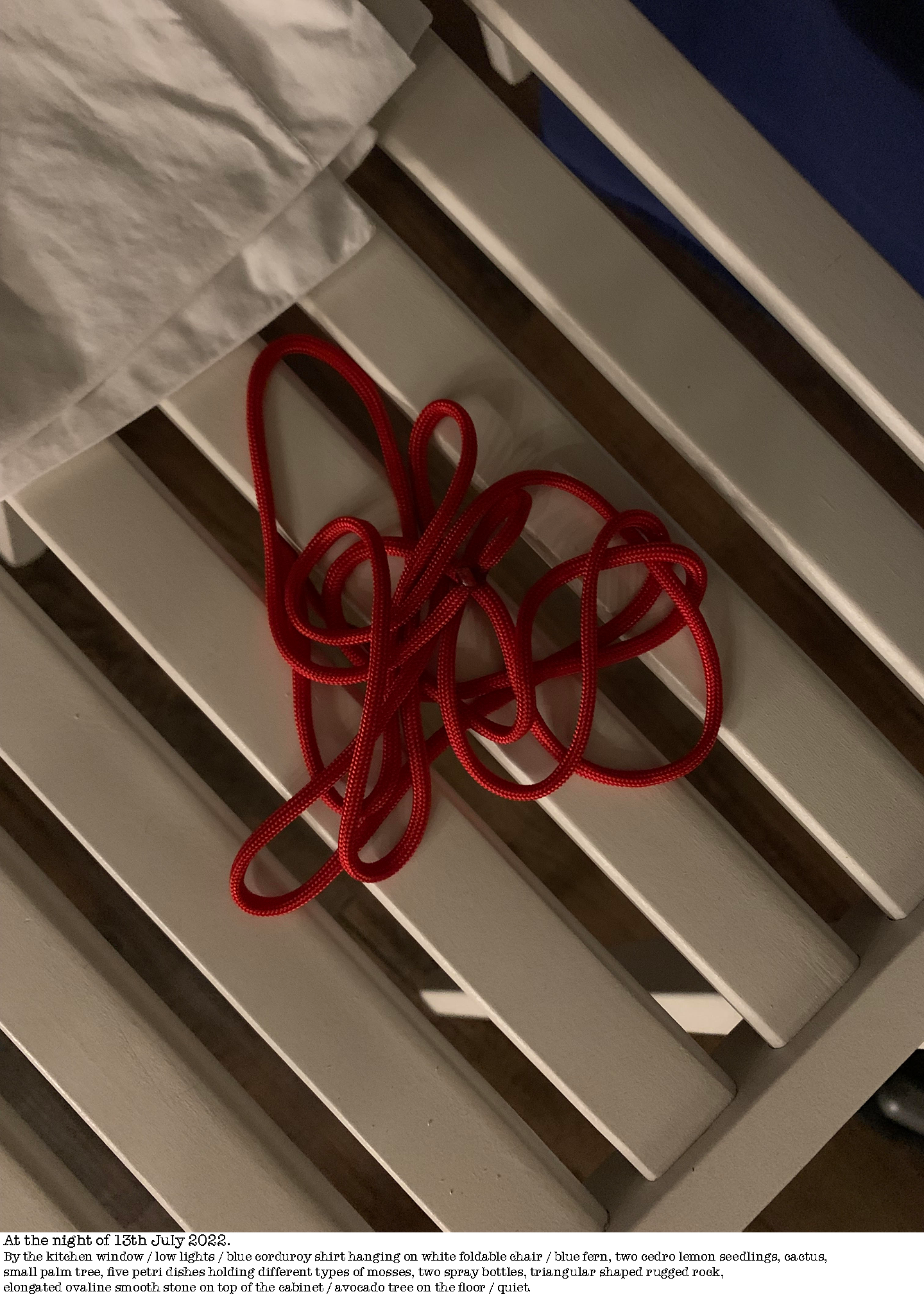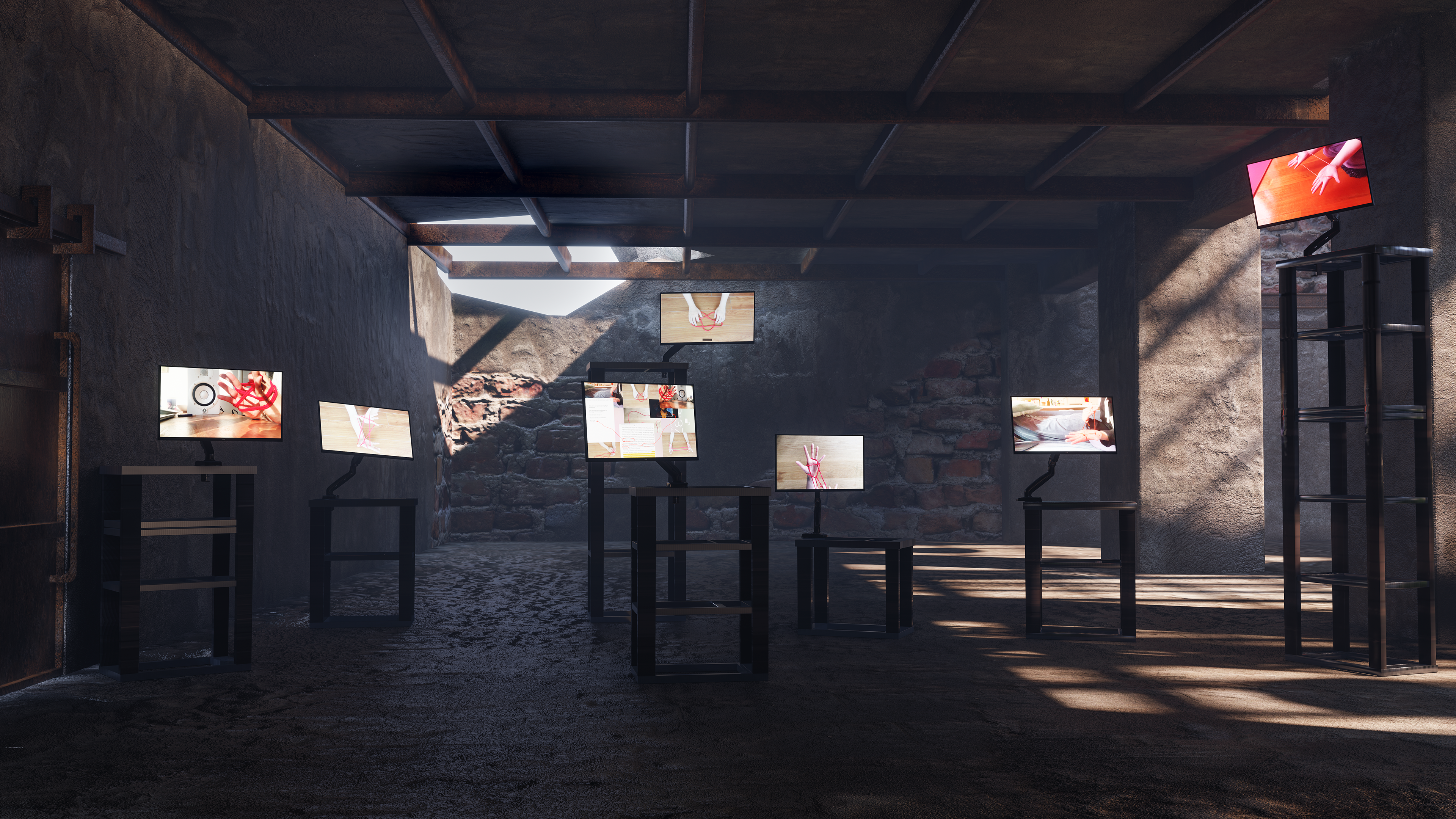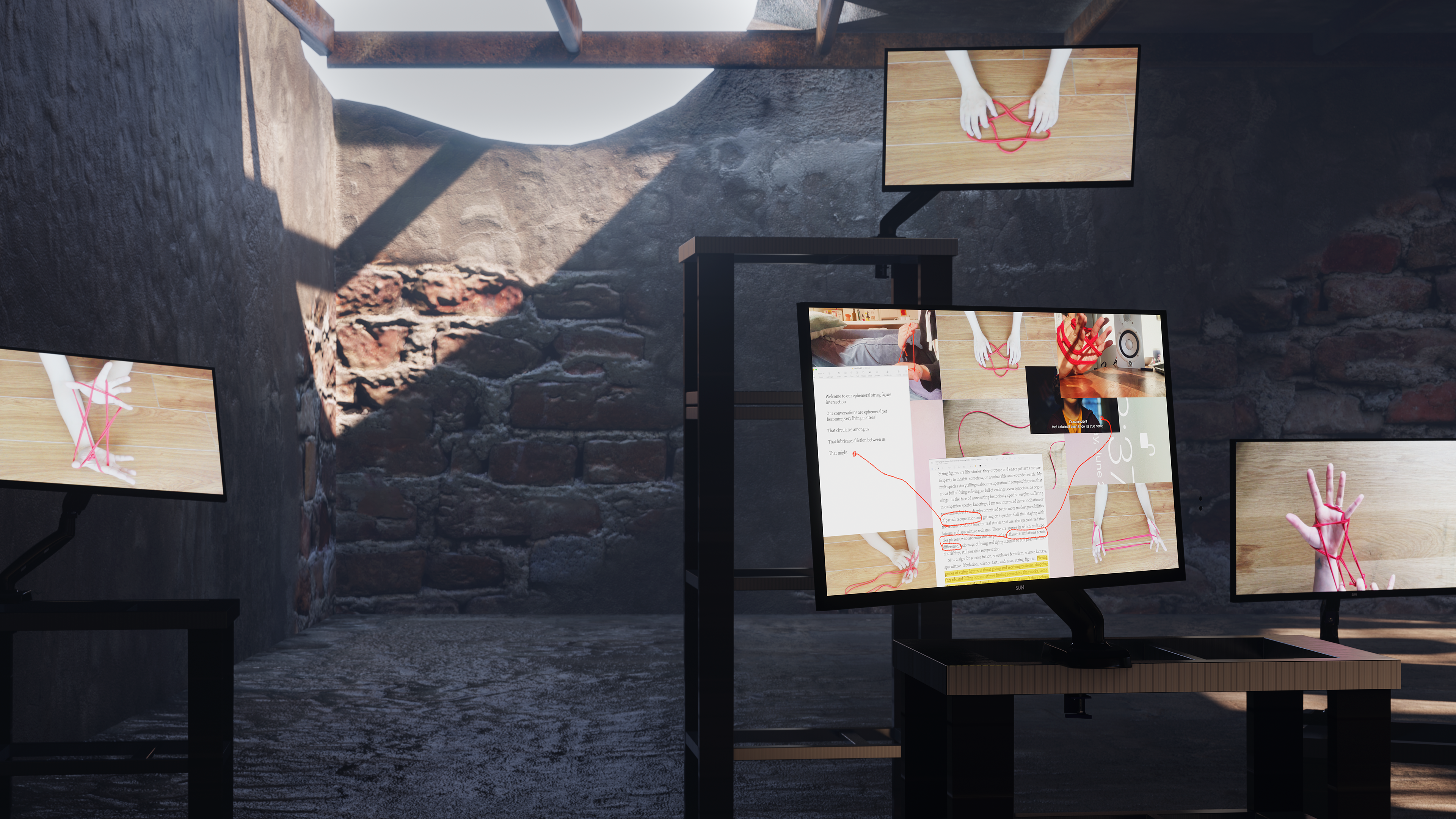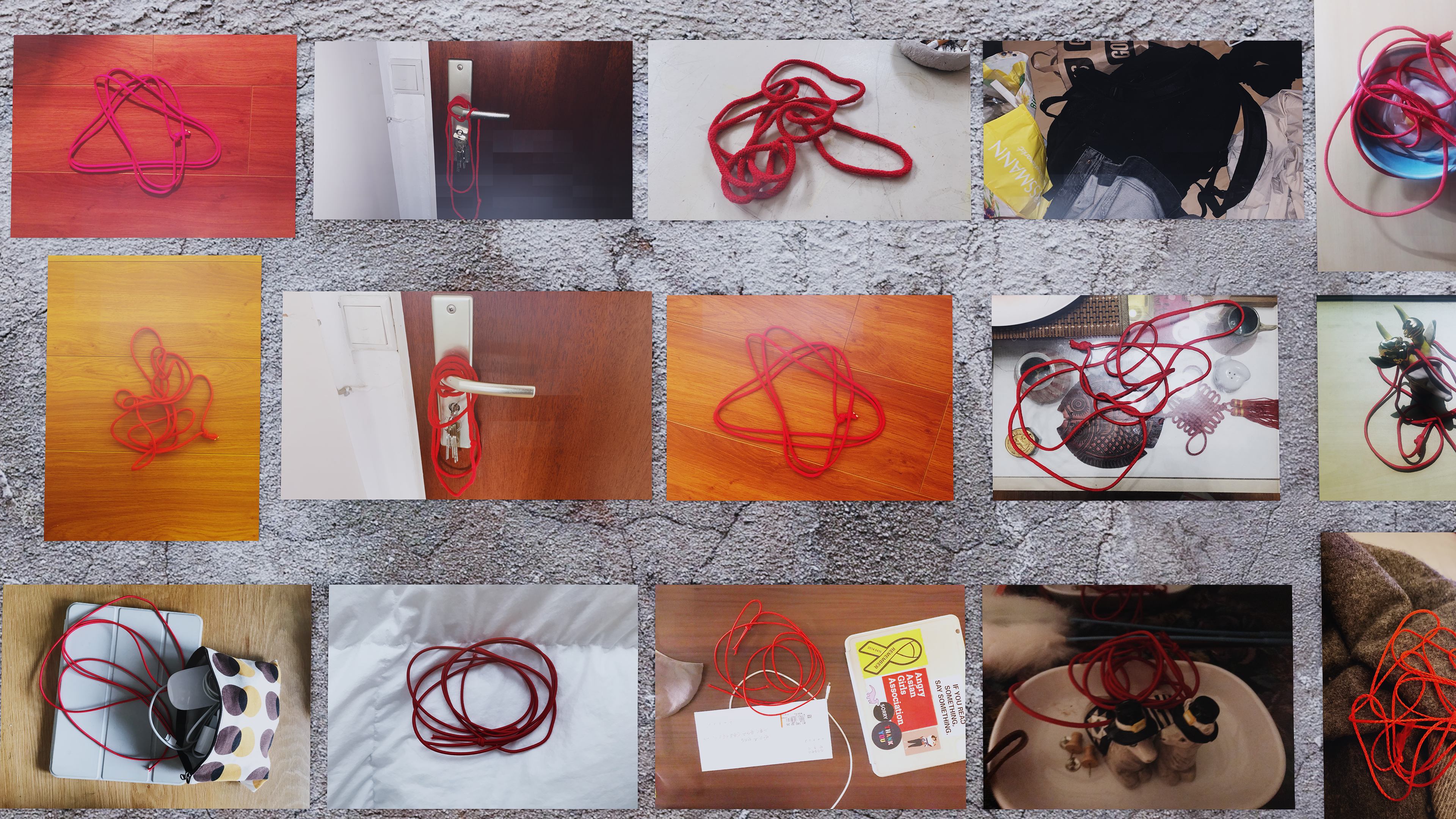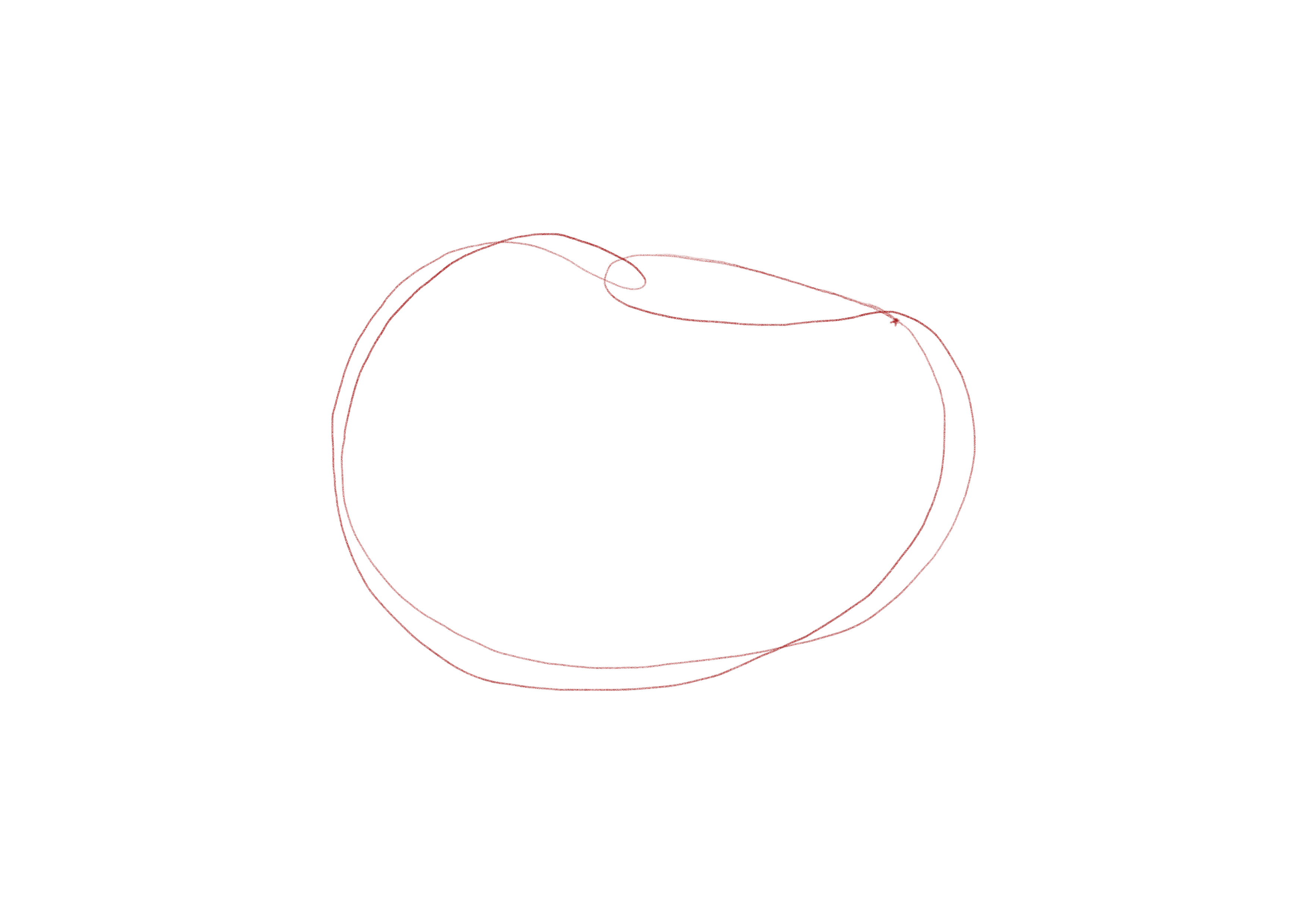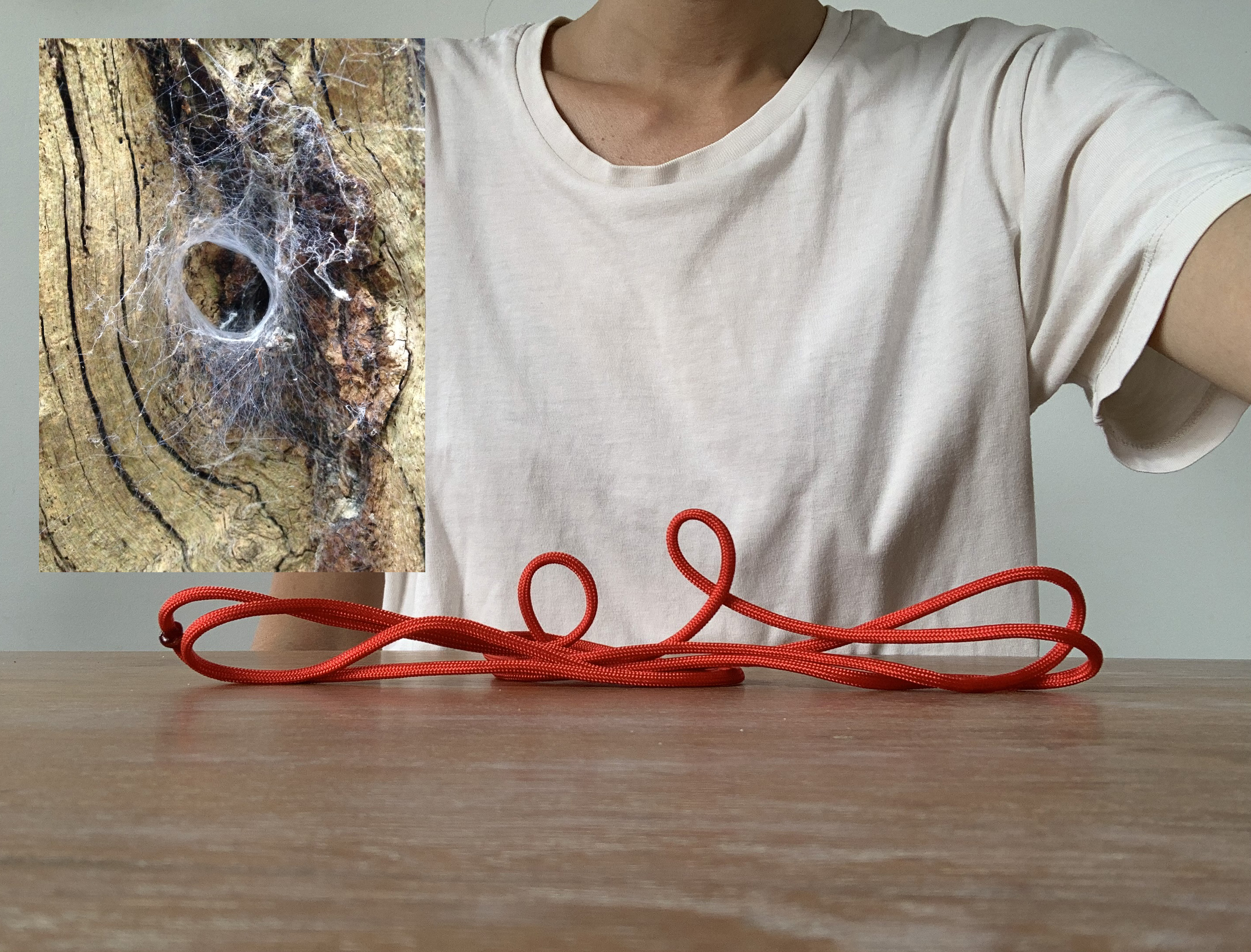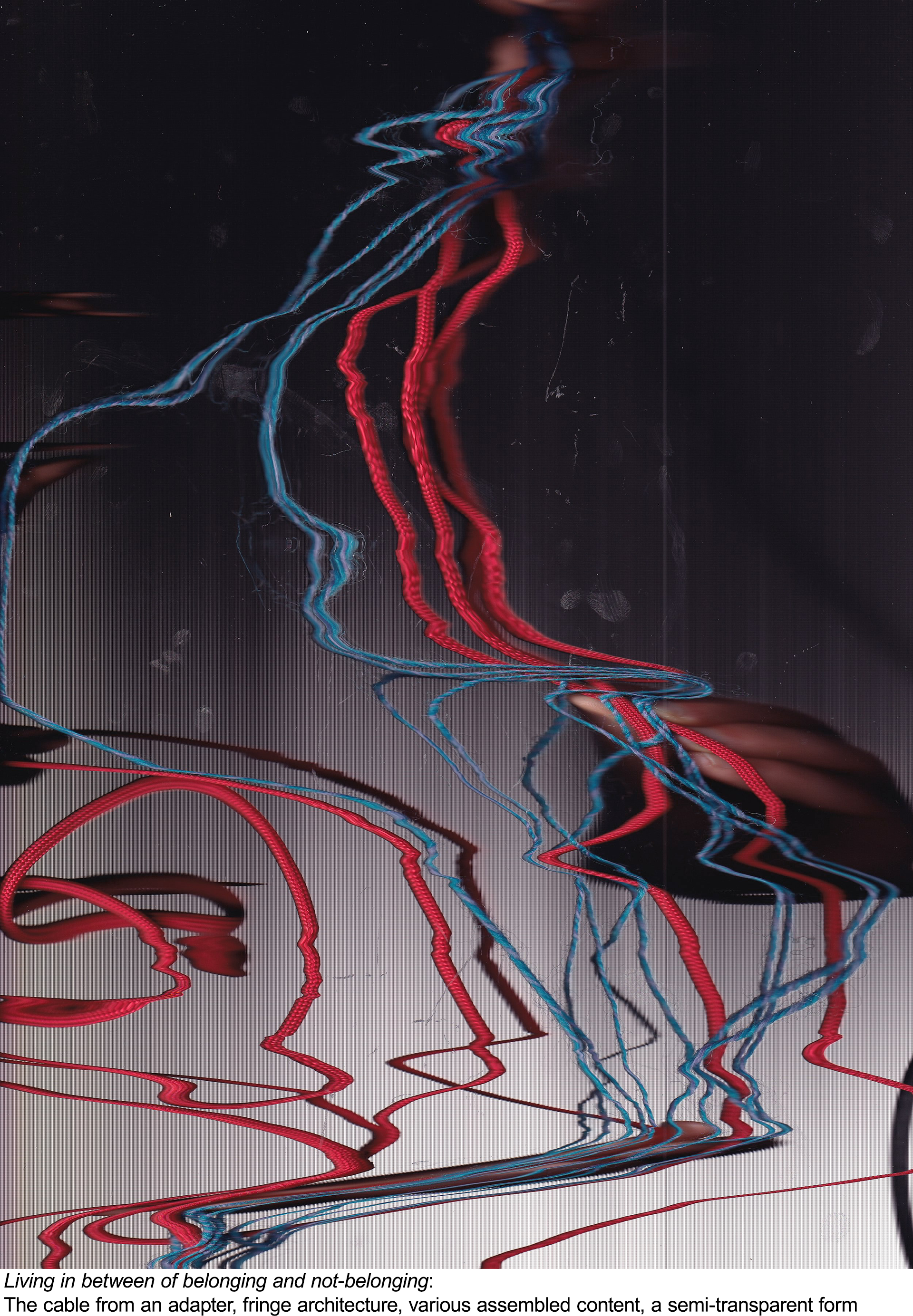Proposition 3: String Figure
2022-2023. Seven-channel video installations (HD, colour, sound, loop, variable dimensions), 46 photography (archival Canson Baryta Photographique, variable dimensions), indexical words, Dashes out of the Room (transcription poem, string figure inventions in drawing, videos, notations, and photography textured paper, OHP film, 8.5” X 11”).
The entire project was created at the AGO X RBC Artist-in-Residence 2022, Art Gallery of Ontario, Toronto, Canada.
Project participants: Miru Bahc, Donghoon Gang, Sophie Morrow, Dongyan Chen, Corinna Berndt, and Yoojin Lee.
Presentation: Open Studio of the Artist-in-Residency, Art Gallery of Ontario, Toronto, Canada, 2022.
Proposition 3: String Figure unfolds in three parts: revisiting their pasts of playing, learning and teaching string figures (cat's cradle) in childhood; reenacting them and documenting how the friends live with their own strings in the present moment; imagining how they would revive the ephemeral conversations with Ivetta (a total of 12 conversations that went on for average 2 hours.) by inventing string figures responding to the memories. Meanwhile, Ivetta murmurs in front of their digital screen as turning the ephemerality of the conversations that dissolve into the virtuality of the digital environments into something at least reciteable, tangible, revivable, and living matters that we might be able to keep visiting even if the actual moments fade out.
One friend would finish archiving their four days spent with their string and string figures, and the materials would be passed to the next friend. Every one of them was asked to index respective surroundings of when a photo of their string was taken. It’s become an exensive list of “indexical words” (that, Ivetta hopes, can function as a sprouting point for your imaginations and empathy to feel related to their storytelling and surroundings.)


